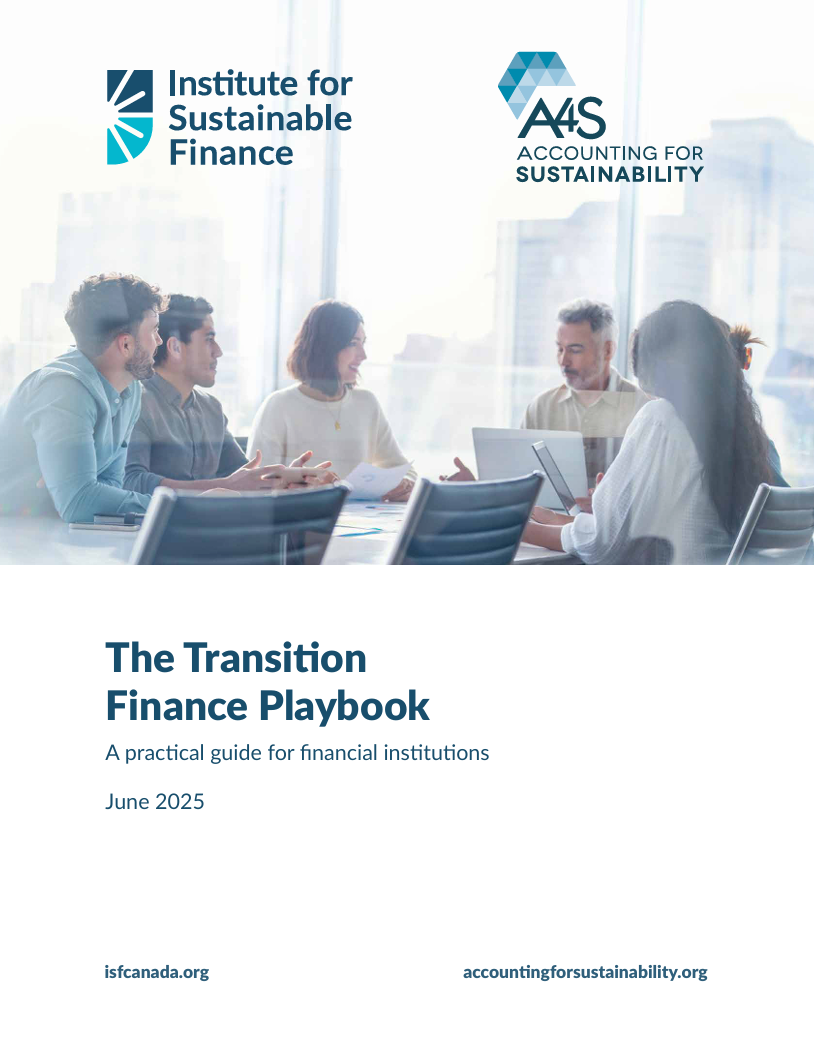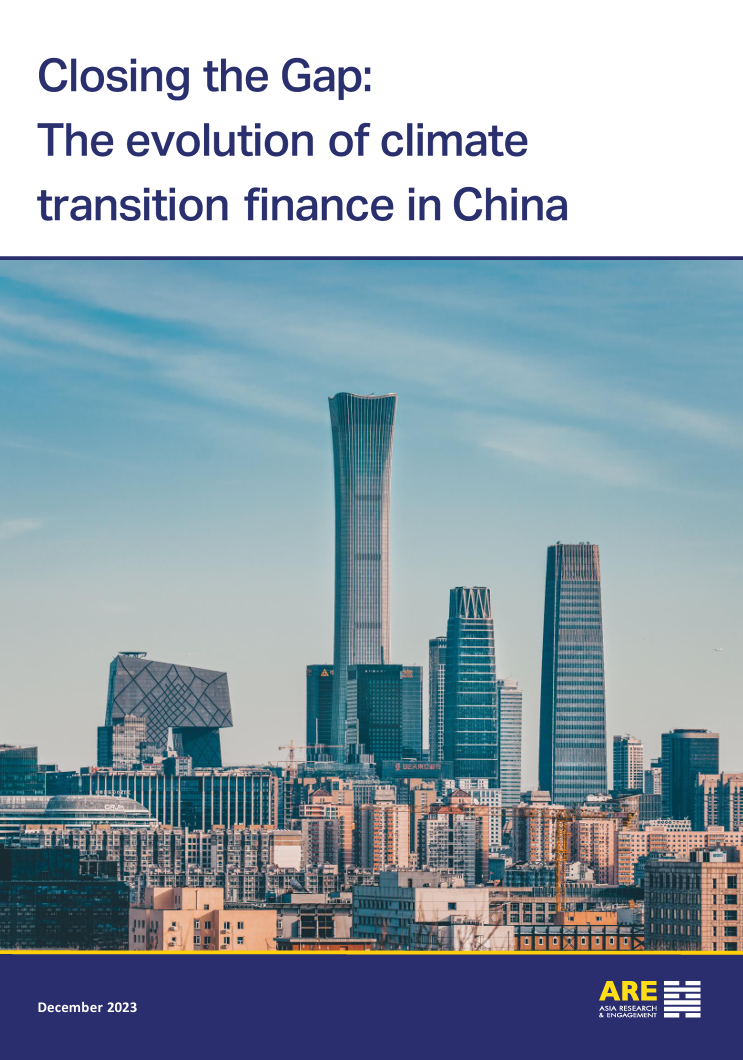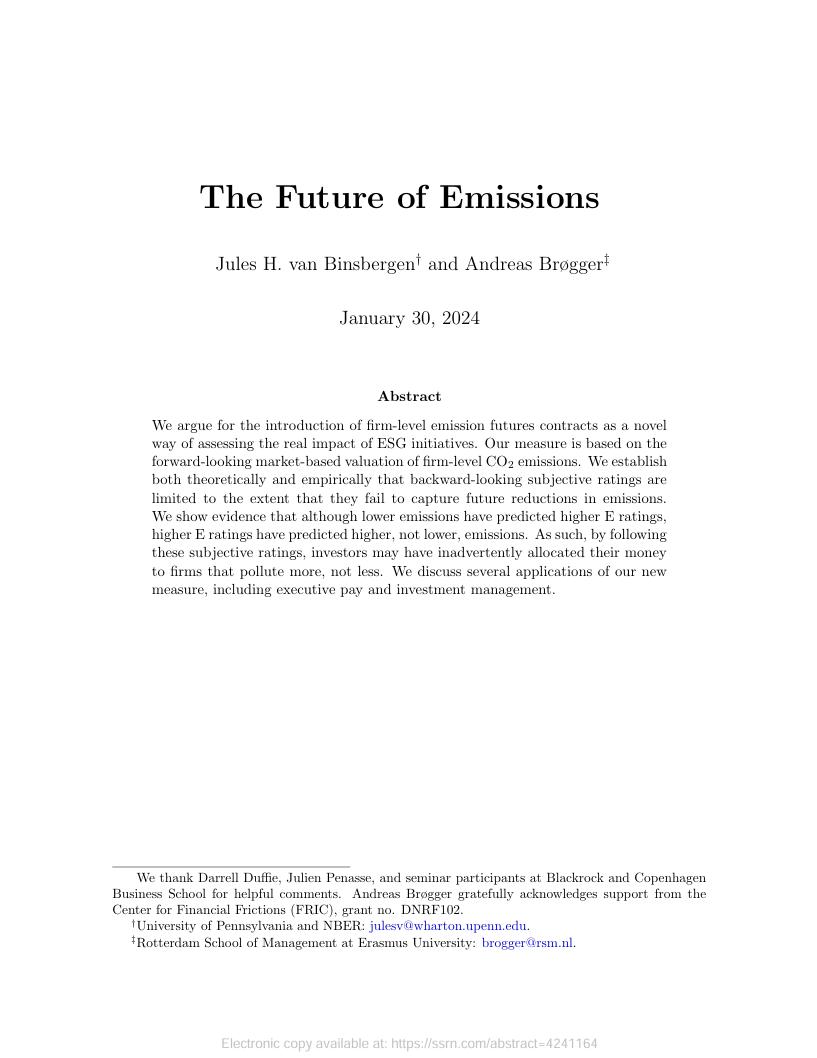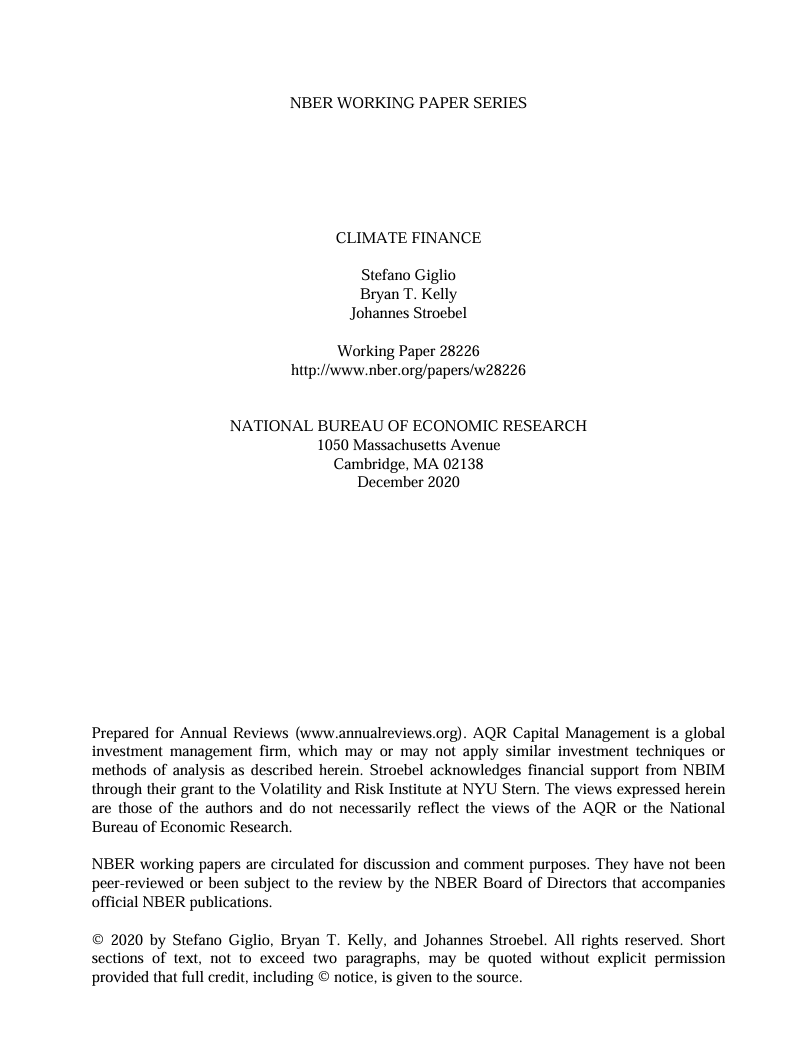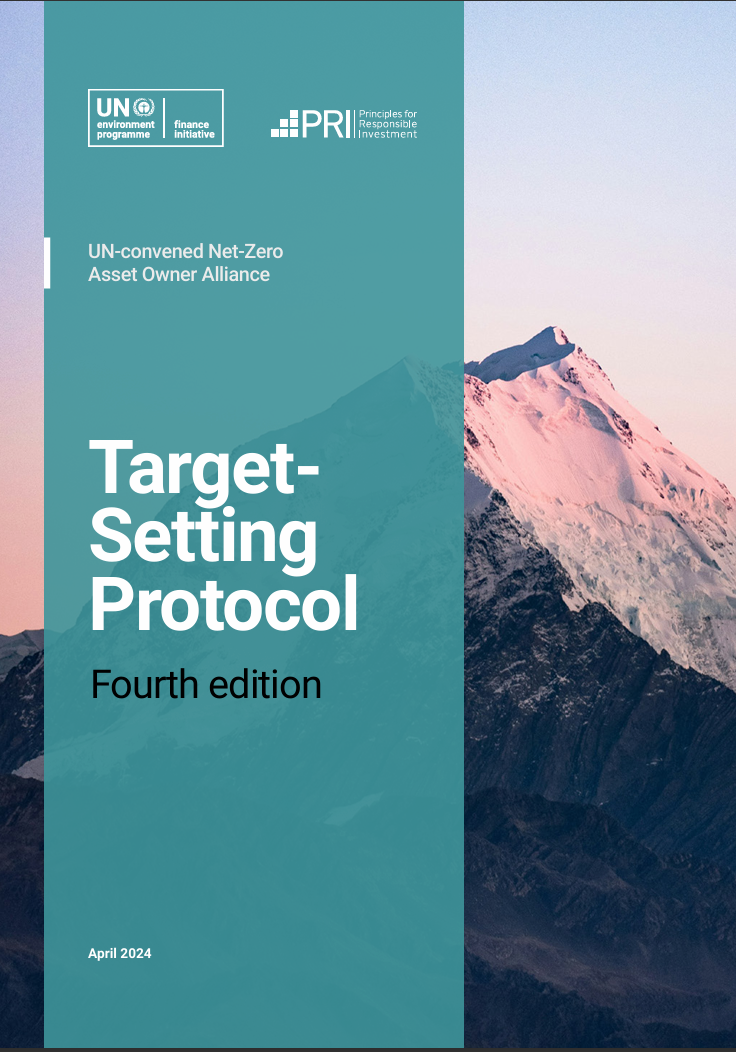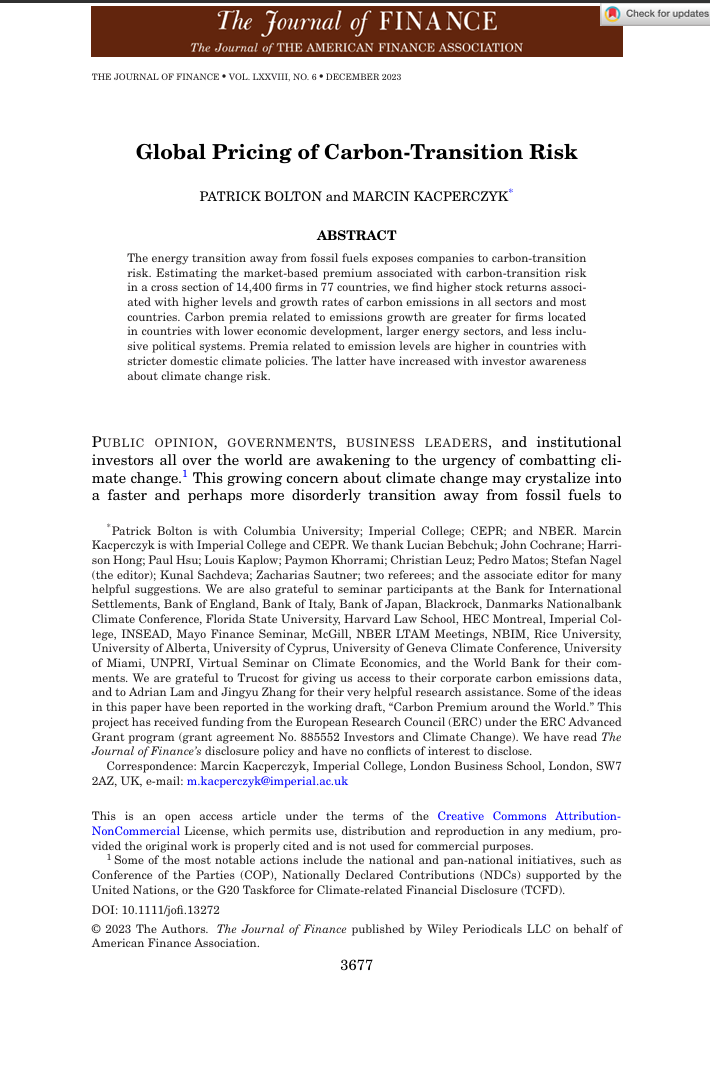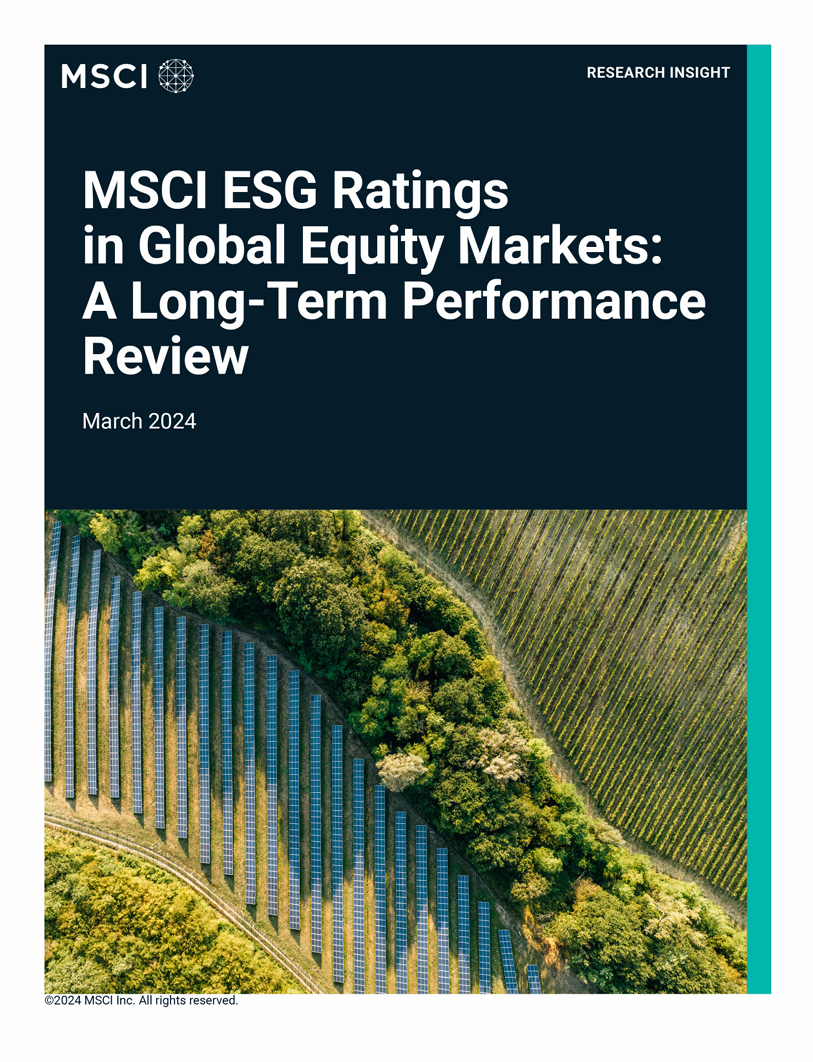Library | ESG issues
Carbon Intensive Industries
Carbon-intensive industries, such as fossil fuels, agriculture, and transport, are major contributors to greenhouse gas (GHG) emissions and climate change. Investing in these industries can pose risks due to regulatory changes, reputational concerns, and shifting consumer preferences. Opportunities exist in technologies and practices that reduce carbon emissions.
Refine
106 results
REFINE
SHOW: 16


The transition finance playbook: A practical guide for financial institutions
A practical guide outlining how financial institutions can scale transition finance through governance, eligibility criteria, portfolio segmentation, due-diligence enhancements and engagement. It highlights Canadian market context, barriers, and actionable “top tips” to support credible decarbonisation, stewardship and collaboration across the financial system.
The investor climate policy engagement paradox
The article explores the paradox in which institutional investors focus heavily on climate-risk disclosure, an area of comfort and perceived legitimacy, while underinvesting in real-economy climate policy that could meaningfully reduce systemic risk. It argues that meaningful climate action requires shifting from technocratic “managing tons” approaches toward politically challenging asset revaluation and more robust policy engagement.
Closing the Gap: The evolution of climate transition finance in China
China’s transition finance market is expanding to support the decarbonisation of high-emitting industries. The report outlines growth in green and sustainability-linked bonds, emerging transition frameworks, and ongoing debates on coal and gas inclusion, highlighting the need for clearer standards and broader financing tools to meet China’s 2060 climate goals.
The future of emissions
This report proposes using firm-level emission futures contracts to better measure and incentivise real environmental impact from ESG investing. It finds that current backward-looking ESG ratings fail to predict emission reductions and may misallocate capital to higher-polluting firms. Market-based, forward-looking emission futures could improve measurement, incentives, and investment impact.
Morgan Stanley Wealth Management
Morgan Stanley Wealth Management provides financial advice, investment strategies, and portfolio management for individuals, families, and institutions. Its services include retirement planning, sustainable investing, and access to global market insights. Morgan Stanley combines advanced digital tools with expert guidance to help clients achieve long-term financial goals and preserve wealth across generations.
Financial Markets Authority (FMA)
Financial Markets Authority (FMA) is New Zealand’s independent regulator overseeing financial markets. It promotes fair, efficient and transparent markets, ensures quality financial advice and protects investors. FMA develops regulation, supervises licenced entities, enforces compliance, supports innovation and aims to enhance trust in NZ’s financial sector.
Climate finance
This report reviews research on climate finance, focusing on how climate risks affect financial markets. It discusses theoretical models and empirical evidence on pricing climate risk in equities, bonds, housing, and mortgages, and explores portfolio strategies for hedging. Future research directions in modelling, measurement, and financial stability are highlighted.
Target-setting protocol fourth edition
The report outlines the fourth edition of the Science Based Targets initiative’s target-setting protocol. It provides updated guidance, criteria, and methodology for companies to set near-term science-based greenhouse gas emission reduction targets, aligning with 1.5°C pathways and incorporating broader coverage across sectors, geographies, and organisational boundaries.
Global pricing of carbon-transition risk
This report examines the global pricing of carbon-transition risk by assessing equity markets’ responses to climate policy and transition exposure. It analyses regional variations, sectoral impacts, and the role of carbon pricing in financial markets, highlighting implications for asset valuation and investment strategies.
MSCI ESG ratings in global equity markets: A long-term performance review
This MSCI report reviews the long-term performance of ESG ratings in global and developed equity markets. It finds that higher-rated companies outperformed peers, driven by stronger earnings growth and dividend yields rather than valuation effects. MSCI ESG indexes also generally outperformed their benchmarks across regions and during crises.
Rocky Mountain Institute (RMI)
Rocky Mountain Institute (RMI) is an independent, non‑partisan, non‑profit focused on transforming global energy systems. It delivers market‑driven, clean energy and decarbonisation solutions—spanning policy, industry and communities—to advance affordable, zero‑carbon futures. RMI supports rapid energy transition and sustainable development through research, analysis and global collaboration.
Greenhouse Gas Protocol
GHG Protocol (Greenhouse Gas Protocol) sets globally recognised greenhouse-gas accounting standards and guidance. Developed by World Resources Institute and World Business Council for Sustainable Development, it enables businesses, governments and cities to measure, report and manage emissions—covering operations, value chains and mitigation actions across Scopes 1, 2 and 3.
Guidance for leveraging the Singapore-Asia taxonomy in green and transition financing
This report provides practical guidance for applying the Singapore-Asia Taxonomy (SAT) in green and transition financing. It addresses data gaps, evolving criteria, transition plans, and scenarios where full alignment with SAT is not possible, promoting credible financing practices across Southeast Asia’s key sectors.
Singapore Sustainable Finance Association (SSFA)
Singapore Sustainable Finance Association (SSFA) supports Singapore’s emergence as a trusted, vibrant and inclusive sustainable‑finance centre. Established in January 2024 by Monetary Authority of Singapore (MAS) and financial industry stakeholders, SSFA drives collaboration across financial, corporate and academic sectors via workstreams on taxonomy, carbon markets, transition finance, blended finance and natural capital.
GHG protocol calculation tools and guidance
The GHG Protocol’s calculation tools and guidance details Excel‑based, cross‑sector, sector‑specific, and country‑specific tools, including those for cities and countries. Each tool includes step‑by‑step guidance and emission factors to support accurate GHG inventory development in line with the Protocol’s standards
The GHG protocol for project accounting
This report outlines standards and procedures for quantifying and reporting greenhouse gas (GHG) reductions from mitigation projects. It provides a framework to estimate baseline emissions, assess additionality, and apply consistent accounting principles. The guide supports transparency, credibility, and harmonisation across project-based GHG initiatives.
